© 2025 MJH Life Sciences™ , Patient Care Online – Primary Care News and Clinical Resources. All rights reserved.
Noninvasive Vagus Nerve Stimulation for Migraine Treatment: The PRESTO Study
Noninvasive vagus nerve stimulation may be a viable method for the treatment of acute episodic migraine, according to a new study.
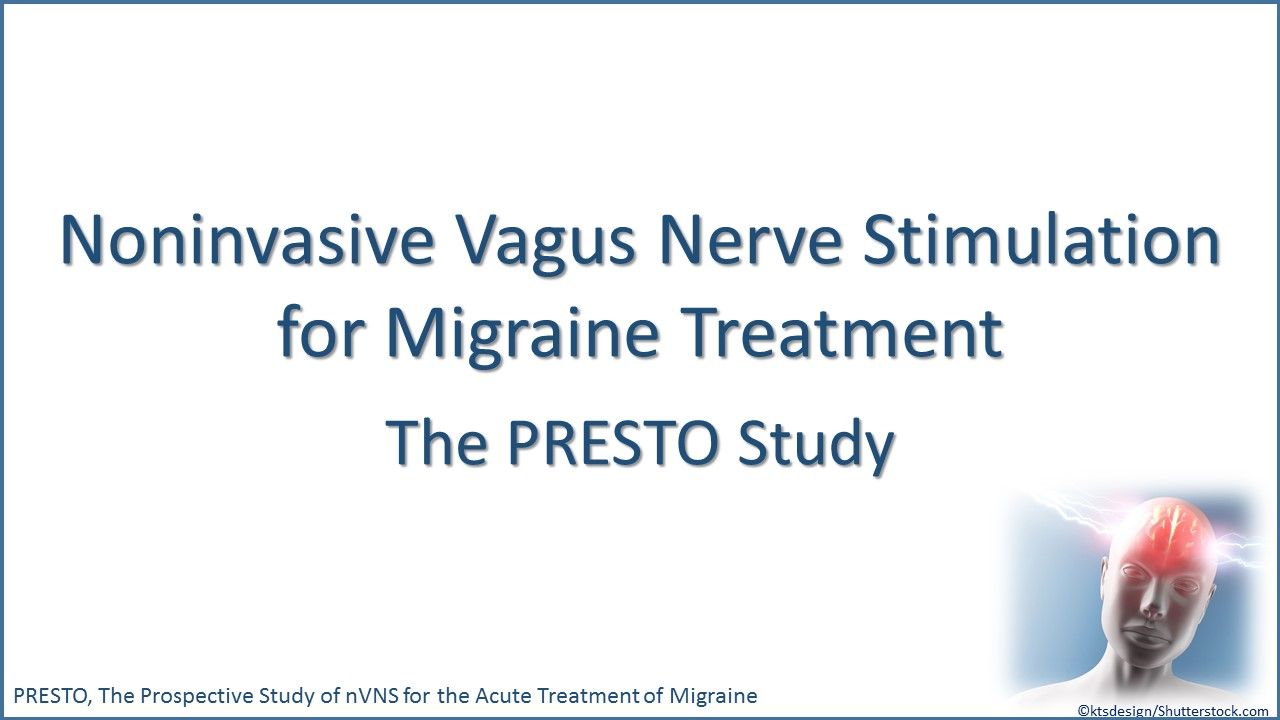
Effective medication options for treatment of acute migraine are limited; results of a new study published in Neurology suggest that noninvasive stimulation of the vagus nerve may be an alternative approach to pills, sprays, and injections. Scroll through the short slideshow above to get study highlights and results that could impact your care of migraine patients.
Reference: Tassorelli C, Grazzi L, de Tommaso M, et al. Noninvasive vagus nerve stimulation as acute therapy for migraine: The randomized PRESTO study. Neurology. 2018.
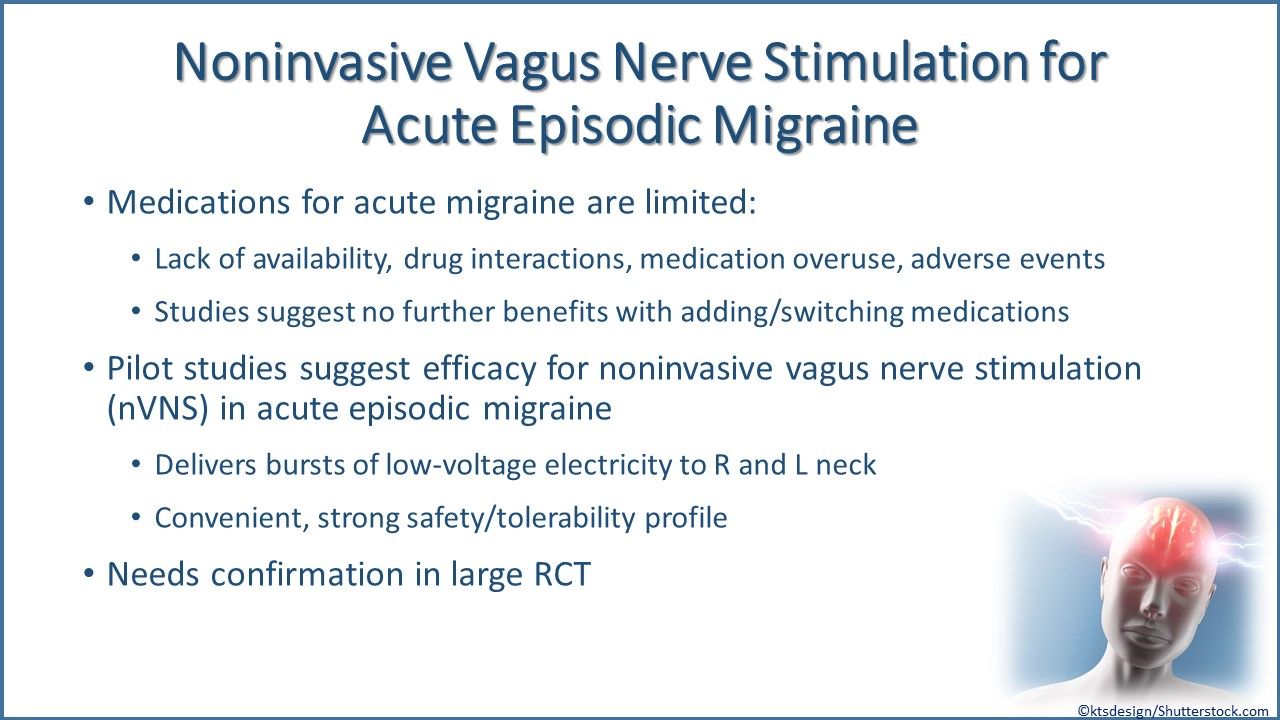
Noninvasive Vagus Nerve Stimulation for Acute Episodic Migraine. Noninvasive nerve stimulation (nVNS) delivers bursts of low-voltage electricity to the right and left sides of the neck, is convenient, and has demonstrated a strong safety and tolerability profile. Early studies suggest the modality may be effecitve for acute episodic migraines, however, its use needed confirmation in a large, randomized controlled trial.

RCT of nVNS for the Acute Treatment of Migraine (PRESTO) Study. The PRESTO study, a double-blind, randomized, sham-controlled trial, sought to determine the efficacy of nVNS for the treatment of acute episodic migraine. The study randomized 248 adults with episodic migraine with and without aura to either nVNS or sham within 20 minutes of pain onset.
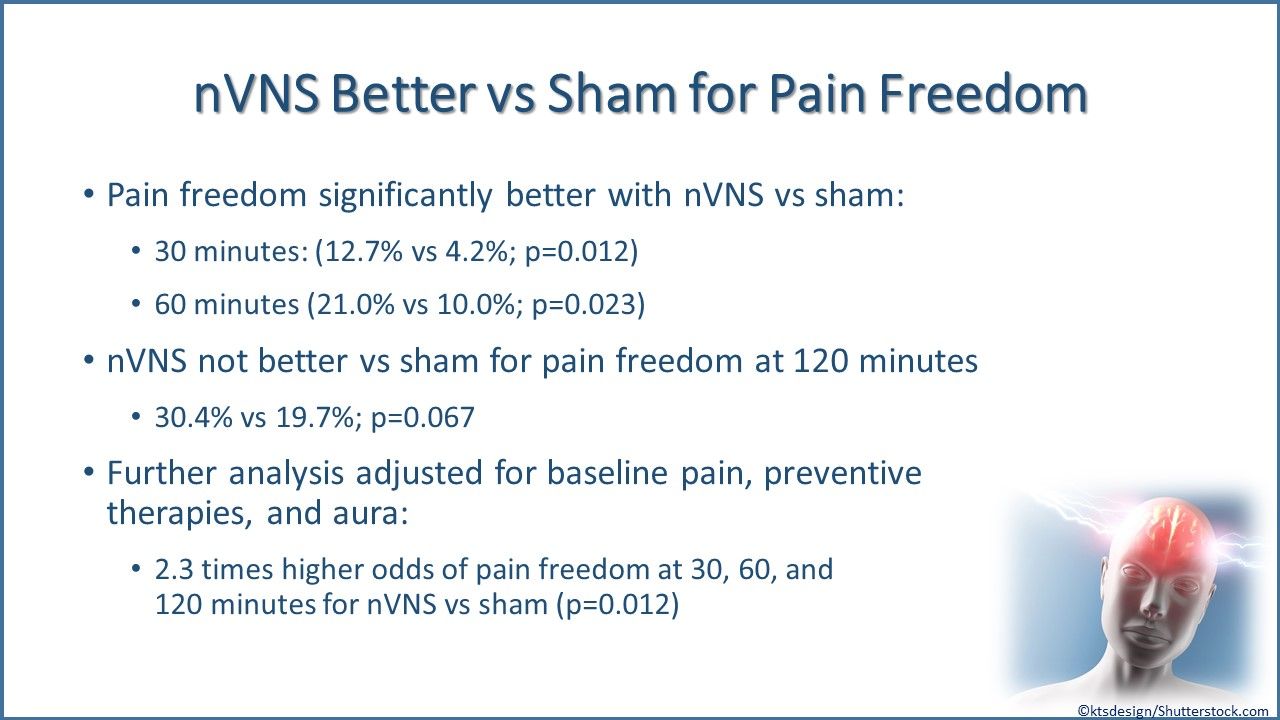
nVNS Better vs Sham for Pain Freedom. Study found that pain freedom was significantly better with nVNS vs sham at 30 and 60 minutes, but not at 120 minutes. Upon further analysis adjusted for baseline pain, preventive therapies, and aura, participants were at 2.3 times higher odds of pain freedom at 30, 60, and 120 minutes for nVNS vs sham.
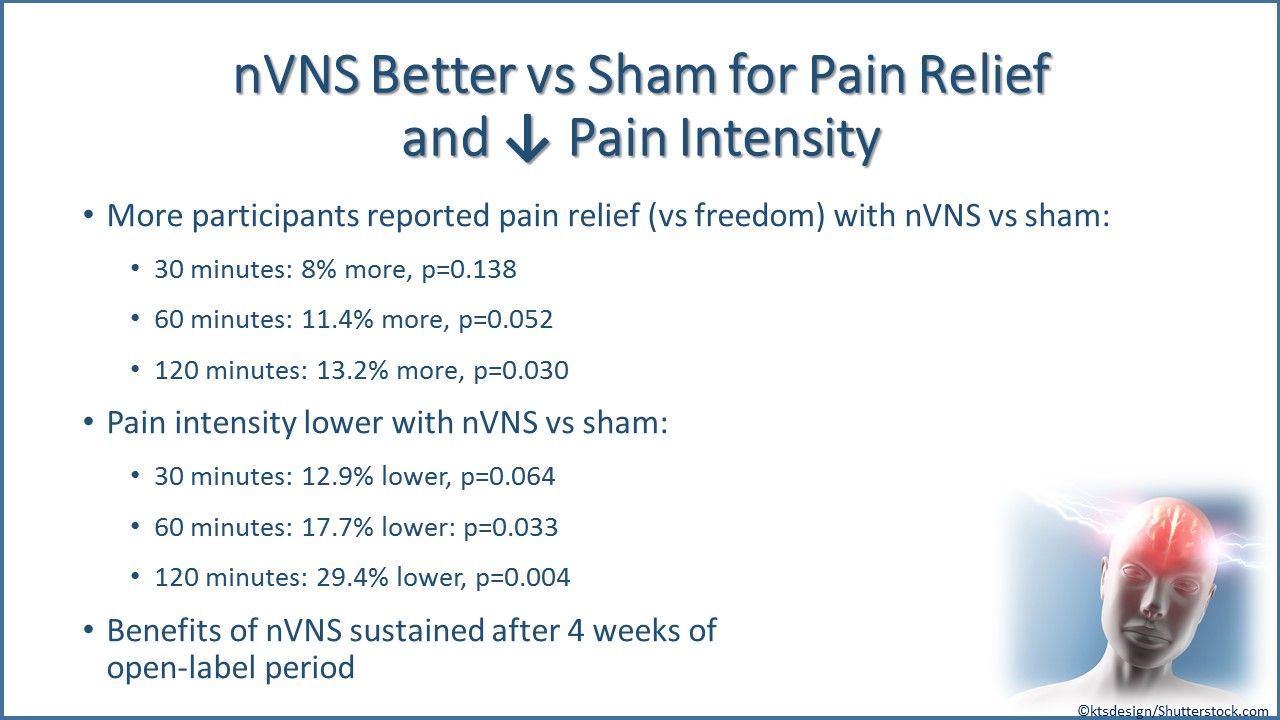
nVNS Better vs Sham for Pain Relief and Decreased Pain Intensity. More participants reported more pain relief (vs freedom) with nVNS vs sham and pain intensity was lower with nVNS vs sham at all time intervals. The benefits of nVNS were also sustained after 4 weeks of open-label period.

Safety, Tolerability, Acceptability. Study found that 72% of participants with nVNS vs 63.9% with sham rated their treatment as a little satisfying or better and 96% of participants in both groups found their device somewhat or very easy to use.
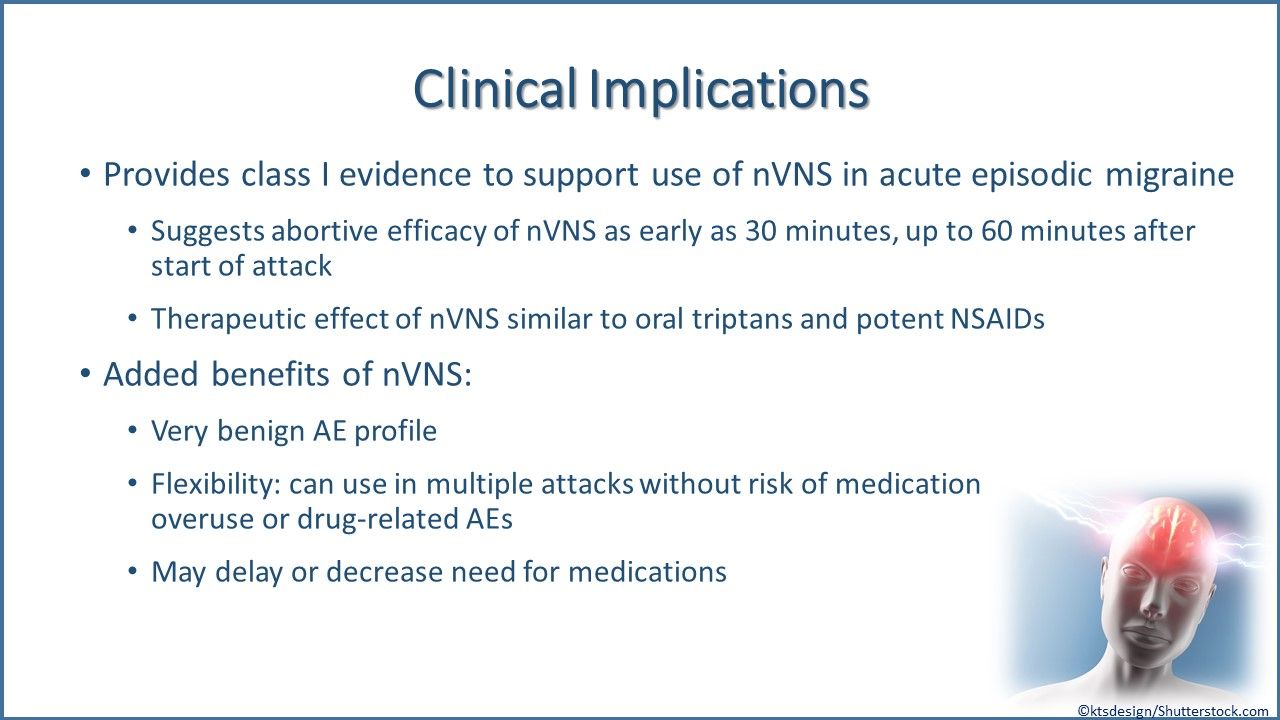
Clinical Implications. The added benefits of using nVNS are:
- Very benign AE profile
- Can use it in multiple attacks without risk of medication overuse or drug-related AEs
- May delay or decrease need for medications.
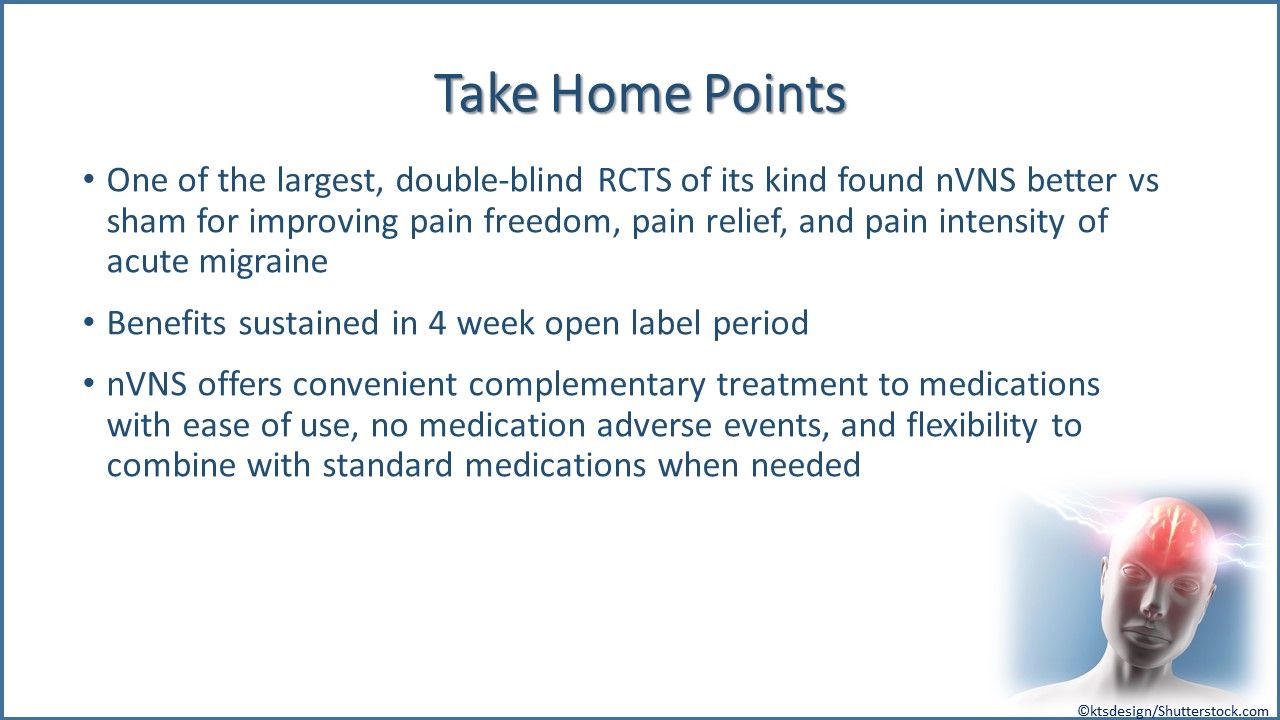
Take Home Points:
- Study found nVNS better vs sham for improving pain freedom, pain relief, and pain intensity of acute migraine
- Benefits were sustained in 4 week open-label period
- nVNS offers convenient complementary treatment to medications with ease of use, no medication adverse events, and flexibility to combine with standard medications when needed



